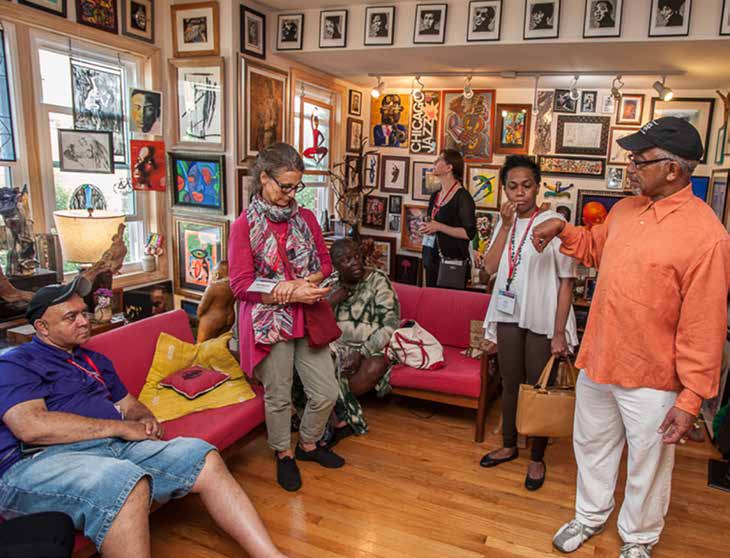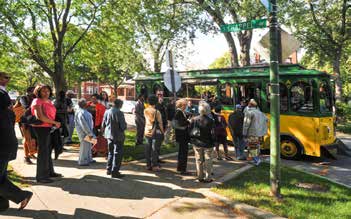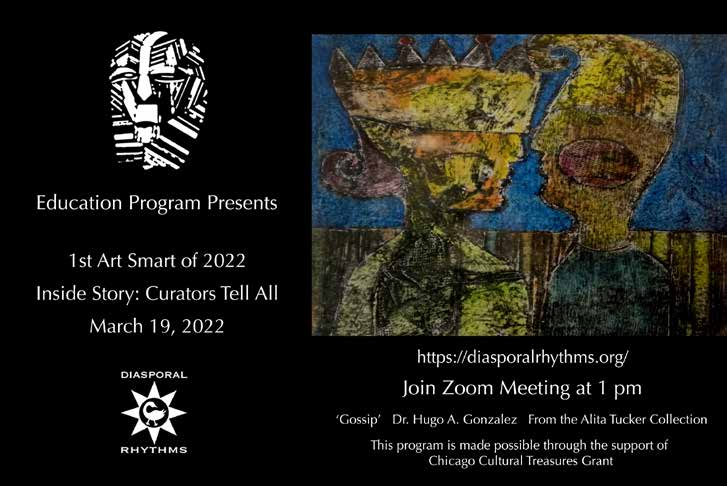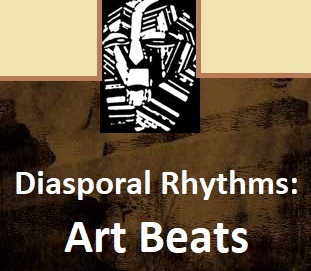
“Culture,” as defined by Wikipedia, is an umbrella term, encompassing the social behavior and norms found in human societies. “Culture” also envelops the knowledge, beliefs, arts, laws, customs, capabilities, and habits of the individuals in these groups. Our culture, as African Americans, descendants of the African Continent, has become more and more important over the decades, primarily since the 1960’s. During that time, we discovered “Black is beautiful.”
Our culture is depicted and expressed in many ways: through music, dance, food, fashion, poetry, prose, art, and more. The way we walk, the way we talk, the stories we tell are all depictions of our precious culture. In 2003 a panel discussion was held in the South Side Community Art Center to discuss many things, among them the culture of the African Diaspora. D. E. Simmons tells us that, “As a result of that discussion, it was realized that there is a void in the art landscape where Black people who were into collecting art from the Black Diaspora from live artists were operating in isolation.”
That panel brought together four collectors: Carol Briggs, Dan Parker, Joan Crisler, and Patric McCoy. The four of them, all collectors of art, realized they had such commonality and symmetry, and there needed to be a not-for-profit organization where their passions, their love of art, and the collection of art from the African Diaspora could grow and expand. D. E. Simmons explains, “The prevailing thought at the time, and still to this day, is that some sort of elitist rich person, and clearly not a person of color, personified the art collector.” That thought was obviously false, as there they were, everyday people, collecting original works of art locally, within the region, across the nation and across the world. Simmons emphasizes, “This was not static, but cultural activism as relates to preserving our culture.” So, to engage in that cultural activism, Diasporal Rhythms was founded. D. E. Simmons is the Executive Director and Acting Chair.
The mission of Diasporal Rhythms is to collect, promote, and preserve art from the African Diaspora by encouraging individuals and institutions to appreciate and acquire this art. Mr. Simmons stated, “Each time we, as an organization, prepare for our next event or exhibition, we always ask what is it that we are trying to say to the community.” At their 10-year celebration, Mr.Simmons said, “We made a very strong statement that our love affair with collecting art in the African Diaspora set the bar for us as an organization putting on exhibition.” And he added, “The love affair continues: The 15-year celebration raised the bar and exceeded expectations. From that position, we discovered the organization has a voice and, more importantly, a perspective on the art community at large.”
In 2023, Diasporal Rhythms will be celebrating their 20th anniversary – 20 years of working through that mission in the Chicagoland community. “As we approach our 20th year of operation,” Simmons reflects, “much has changed in the art community and Diasporal Rhythms is at the forefront of the activity. So, the question is ‘what do we have to say now as we approach 20 years?’” Simmons answers that question. “We are in the position to offer perspective on the position that’s being deployed in all activity leading up to our 2023 exhibition. And the exhibition itself is called ‘Perspective.’”
For 2023, the organization plans to feature the collectors’ perspective on figurative, landscape, abstract, sculpture, and mixed-media images. For this effort, a catalogue is being assembled, which will accompany the exhibition, along with various programs. The programs will be announced later in the year, listing the sites and the dates of the presentations. Events will take place all the way up to the summer of next year, leading up to the exhibition. People can come and participate in what will be very educational and informational programs.
“The prevailing thought at the time, and still to this day, is that some sort of elitist rich person, and clearly not a person of color, personified the art collector.”
The main place where the art is exhibited is in the homes of the founders. The Home Tour has been on hold, due to the pandemic, but Simmons states they are hoping to bring it all back in 2023.
“When you come and see our exhibitions,” he explains, “it’s just like going to the Art Institute. These are owned works that are on loan for the exhibition. A catalogue of the exhibition will be on sale.”
People will be able to purchase tickets for the Home Tour at the very reasonable price of $50 ($10 per home) for a unique, memorable, and engaging cultural weekend. The opening night would be on a Friday, the Home Tour would take place on Saturday, and there would be an auction on Sunday. The design of the Home Tour is based on the different areas of the community. For example, Track A would be Bronzeville; Track B – South Shore, Track C -Suburban Homes. There are three optical tours and five homes on each route, and all of the founders live in each one of these communities.
A part of the mission to help the community become aware of the artists and the different media in which our people create different works of art is a virtual program called Art Smart. People can register for Art Smart on the Diasporal Rhythms website. Another program consists of studio visits with individual artists, exposing the membership and the community to their work.


The organization also has a youth program, where artists are brought in to work with school art education curricula. Frames and art supplies are donated for the students. The goal of this program is to support the artists of the future, giving them the kind of exposure, they could not get through Chicago Public Schools, which lack the resources and the network.
Simmons urges those who have an interest in collecting art for their homes and do not know where to start to come to one of their events. They could even join Diasporal Rhythms to get some exposure. He adds, “It’s a wonderful place to learn and there’s a community of wonderful collectors who are more than happy to share what they have learned.”
In terms of ongoing events, one of the key features of the organization is the Home Tour, where members open up their homes and the public is invited to participate. Shuttle busses or trolleys will transport participants to tour the homes on two or three different routes. Each route consists of five homes where participants view a unique curated collection of art through the various collector members of Diasporal Rhythms. “This unique tour,” as Simmons explains, “is a different immersion experience into our culture. It exposes participants to local artists who are living and producing museum-quality work right within our own community.
There are three optical tours and five homes on each route, and all of the founders live in each one of these communities.







